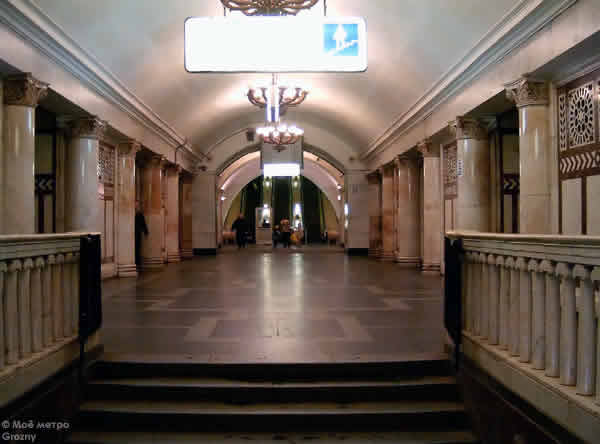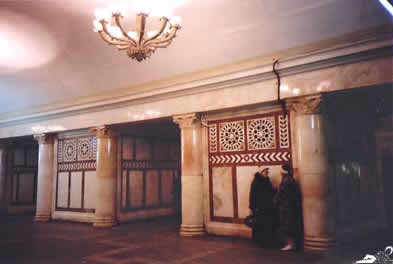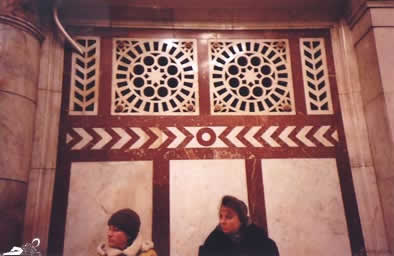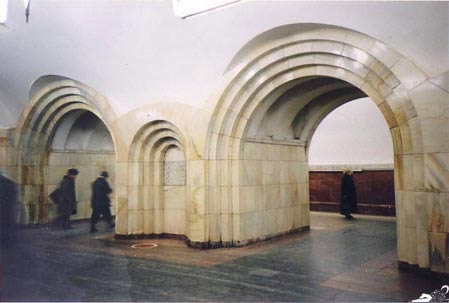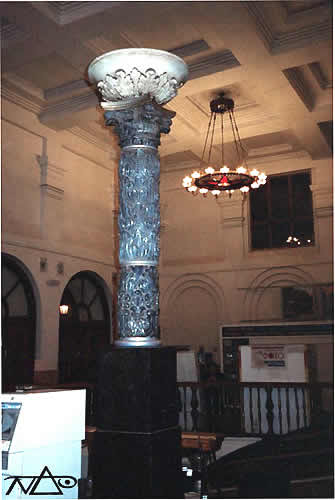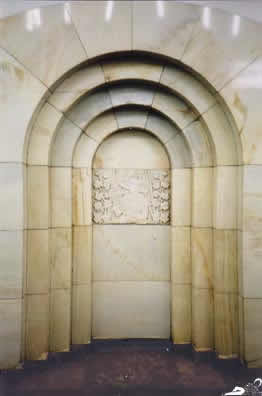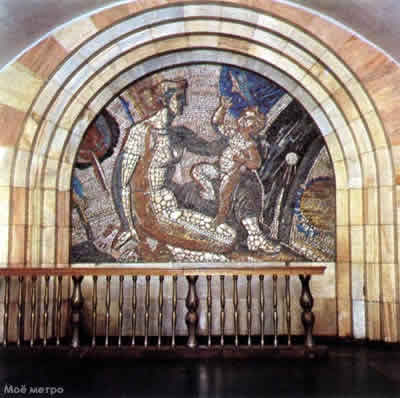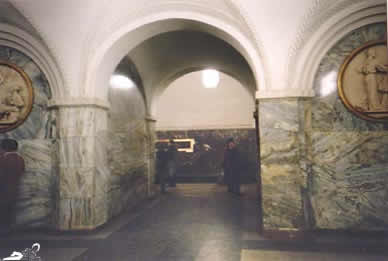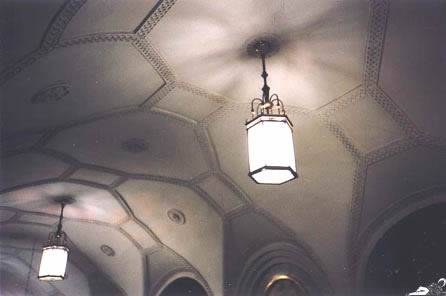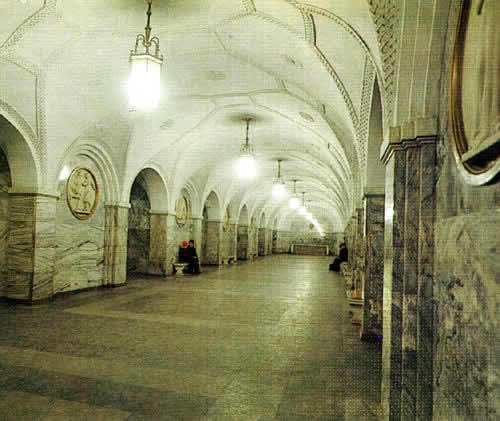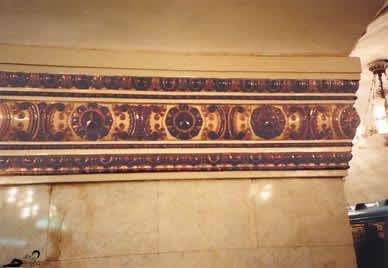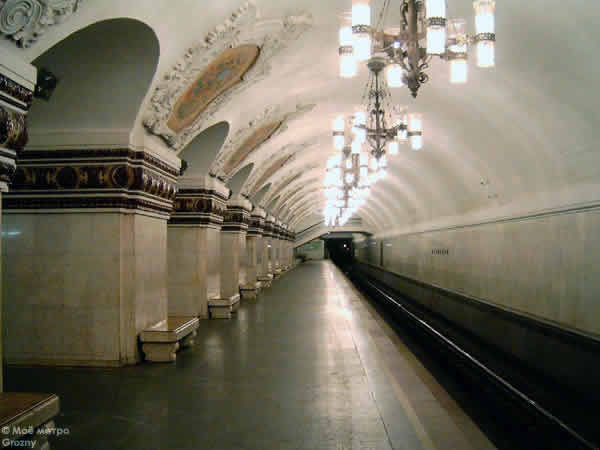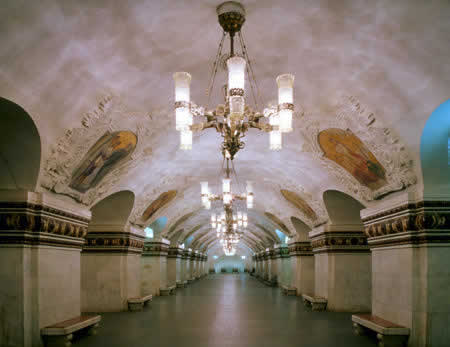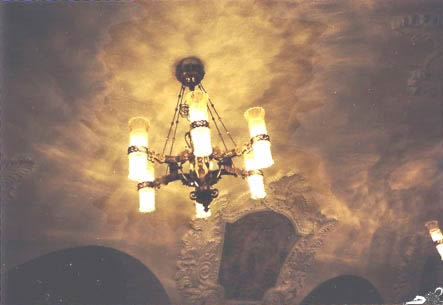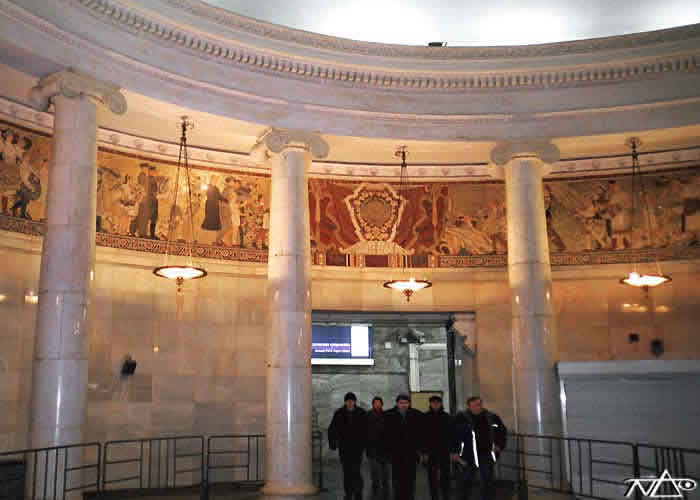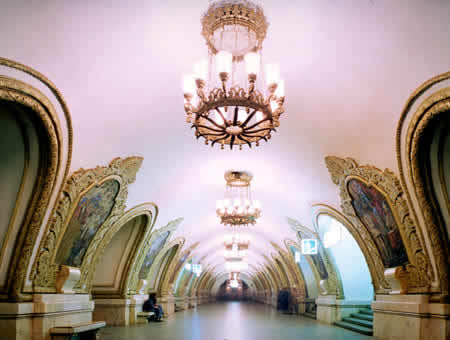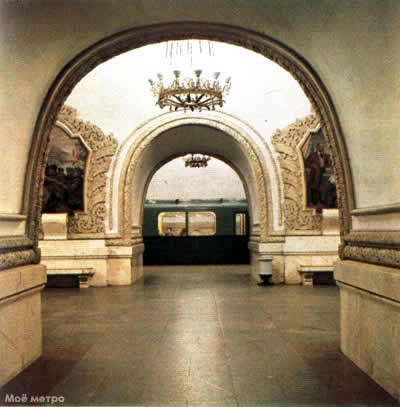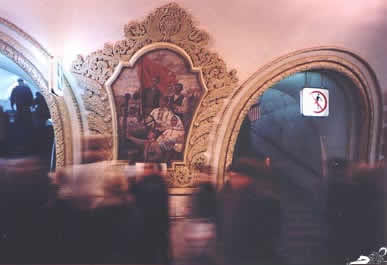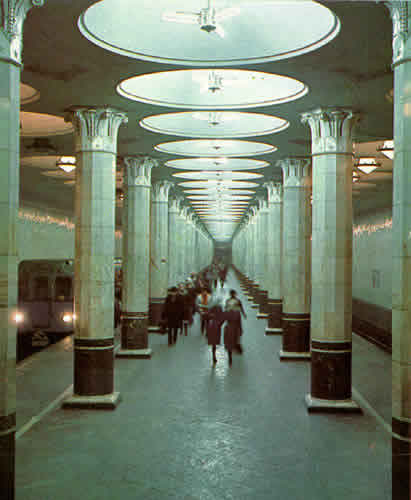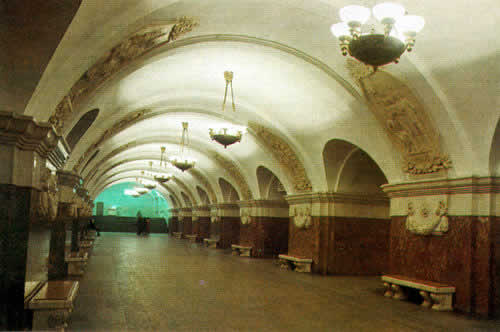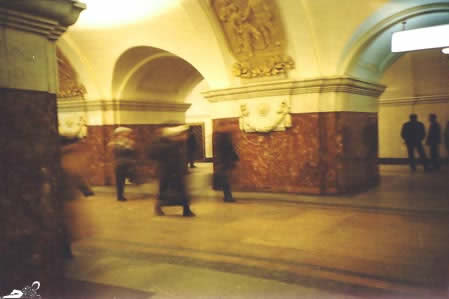The Ring Line (Koltsovaya) – Part Two
The Diggers
|
Paveletskaya Station (Ring Line)
|
Starting already in the 80-ies there was a group of young Muscovites who undertook explorations of the underground system on their own account, just because of curiosity, and longing for adventures. They found many interconnections between underground tunnels and storage places of various public and private institutions.
They state that there are 6 levels below Moscow, at some places even up to 12.
|
Dobryninskaya Station
|
This vast underground system is connected with houses’ basements, with service tunnels for the Underground, with bomb shelters and storage places of the military and the civil defence authorities.
The above mentioned group who call themselves "diggers" (even in Russian: diggeri) have been exploring the Moscow Underground for about two decades. Last year they wanted to open a museum with some of the strange stuff they found on their underground research trips.
According to them Moscow has a vast subterranean population: Refugees from former Soviet Republics and released prisoners who could not obtain the permit to live in Moscow that was required until some years ago; evicted families, gypsies and all classes of homeless; alcoholics and drug-addicts ...
|
Oktyabrskaya
(=October’s) station
|
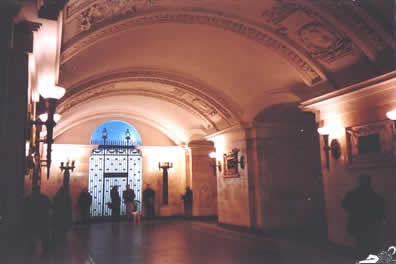 |
Main hall. This station was also opened on 1-1-1950.
I have this picture hanging on my wall and whenever people ask me what this building is I answer: guess! and they say: A church! |
|
There was a certain confusion about this station’s name that it only acquired in 1961. Before that it was called Kaluzhskaya. The decoration of this station has a lot of motives from the Great Patriotic War.
The lamps are deliberately trying to resemble torches. |
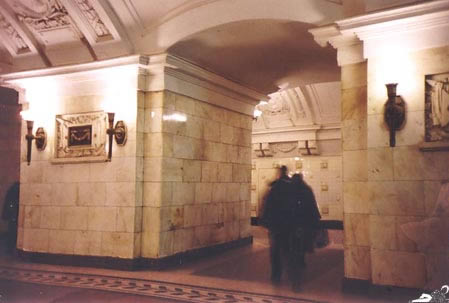 |
The Diggers have repeatedly found corpses on their tours, sometimes of drug-addicts or alcoholics who died from an overdose, but more frequently of people who had been murdered, their remains being hidden somewhere in the vast underground system – sometimes entirely, sometimes only in parts ...
As a lot of the maintenance system of the underground and the city as a whole broke down in the 90-ies – for lack of funding, and in the wake of the general negligence and corruption that prevails in Russia ever since the end of Soviet Union – the Diggers started to fulfil tasks which, though utterly necessary, are not being taken care of by the official authorities. They report corpses or suspicious persons to the police, which to a certain extent is cooperating with them.
|
Park Kultury (Ring Line)
|
Already in the mid 90-ies the Diggers warned that there might be terrorist or sabotage actions from below and inside the Underground as the city of Moscow is extremely vulnerable from below, for lack of supervision. They even reported suspicious groups of people in military clothing (which is quite frequent in use also by civilians, as being cheap and durable,) evidently exploring and/or preparing underground tunnels – for what?
Their alert was in vain, as the Underground bombings of the last years have shown.
|
Kievskaya Station (Ring Line and others)
Sure the Moscow underground is an offspring of the Soviet system and was a means of propaganda. But still, the lavishness with which money was spent on it has deeper roots. Even in Tsarist Russia this was the philosophy of the rulers, clergymen and civil authorities: People all over the country may live in shacks and holes, diseases may spread and hunger may strike vast regions of the interior. But to the visitors and the public, or at least to the inhabitants of the capital, we show all the wealth and skills that our country has to offer: Generous palaces full of marble, gold on Petersburgh bridges and on churches’ domes, expensive fur coats even when it’s warm enough to do without them ... As far as one can trust the news, the New Russians, the oligarchs and the smaller sized bloodsuckers, follow the same philosophy.
Finally for the sake of completeness, below: the main hall of Kievskaya Station/Filichevskaya Line, opened in 1937. The materials and the design are exquisite as well, but to me somehow it lacks the cosiness of the others ... Perhaps of the columns instead of walls with doorways, perhaps because of the lack of pictures ...
|
The Digger’s most prominent figure, Vadim Mikhailov, seems to be a well-known Moscow original. In 2002 he acquired even more fame as he took part in the storming of the musical theater in Moscow where Chechen fighters held hostage hundreds of people.
(As we know, the whole action didn’t produce very convincing results. A lot of people perished due to the application of a special poisonous gas-like substance that caused the deaths of the hostage takers, but of many hostages as well. One of the reasons for that was that this gas was so secret that its chemical formula was never revealed to the doctors treating the surviving hostages. But this, it must be said, cannot be blamed on the Diggers.)
Mikhailov also acted as an advisor to the police and special forces about possible connections of the building to the underground system, thus cutting off a possible escape route for the hostage takers.
|
Krasnopresenskaya Station
This station, opened in 1954, is named after a Moscow district called Krasnaya Presnya. The district itself was named after a brook called Presnya flowing there originally.
There is a museum in this district, commemorating those days of turmoil. At least, it was there in 2000 when I last visited Moscow. I seemed to be the only visitor for ages. The wardens were elderly women, quite ill-humoured (I assume, being paid minimum pensions, perhaps even with delay, and trying to earn extra money this way) and extremely unhelpful and unfriendly. Evidently the were not used any more to visitors passing by. The station’s marble reliefs are also dedicated to the events of 1905. |
Mikhailov, together with others, runs a service called DiggerSpas (=Digger-Saviours, Digger-Aid-Troop) which cooperates with various authorities in the case of catastrophies where the knowledge of subterranean Moscow may be useful. He is well-known to the secret service, but seems to enjoy a certain estimation from all sides as an underground expert.
I found a contact website where Mikhailov is looking for a girlfriend and presents his expectations: She should be between 17 and 25, black, mulatto or Asian (that is, not Siberian, but from the Far East, China, Thailand or the like) and live in Moscow or its surroundings. He offers his exciting life and personality, a lot of interesting adventures, stepping up with him at a lot of public events; he also offers introducing her into the secrets of subterranean Moscow ...
Unfortunately, I meet none of his demands. Otherwise I would have contacted him immediately!
*********************************************
Most of the pictures on these pages on the underground were taken by me, some of them are from the official website of the Moscow Underground designed by Artemiy Lebedyev to which I also owe a lot of the information provided: www.metro.ru
Another site from where I took some pictures and also information is: www.mymetro.ru
There were also plenty of other Russian sources used which I don’t bother to mention here as I reckon that most of the readers of this site don’t speak Russian.
That is, the Russians know about the importance, beauty and value of this unique Underground system. It’s still up to the foreigners to discover and enjoy it!
On the Diggers you may also find English information through Google.
These pages were assembled and written in 2004.
